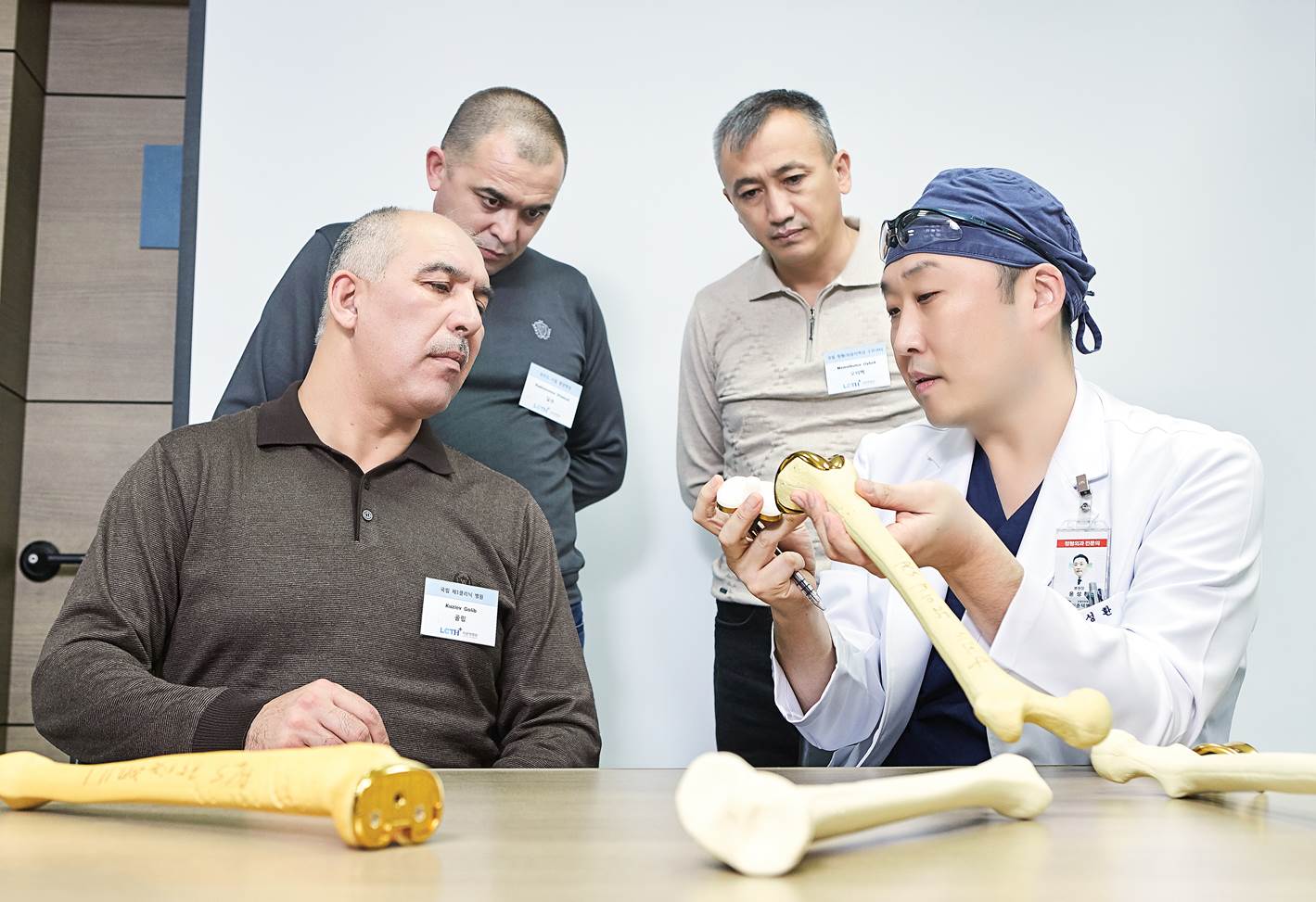[LeeChunTek Orthopedic Specialty Hospital] Robotic artificial joint surgery
- Name 관리자
- Date 2021-12-27
Robotic artificial joint surgery at LeeChunTek Orthopedic Specialty Hospital
Go Beyond the Limits
The only treatment for end-stage degenerative arthritis known to date is artificial joint replacement, which cuts the bone in the lesion and inserts an artificial joint made of a special material. This procedure is designed to relieve the pain and allow the knee joint to function properly. While the size of the joint, the angle of the contorted knee, and the location of the lesion vary on the patient, the existing surgical method has required a wide incision of 15 cm or more because the surgeon has no choice but to observe the surgical site with the naked eye. In addition, it has been difficult to provide surgery tailored to individual characteristics because the operation plan is usually set up depending on the experience and skills of the operating surgeon. In artificial joint surgery, the length of use of the artificial joint can be increased only when the lower limbs are aligned well. However, there is a high possibility of error in the alignment angle when the surgery is manually performed.
In order to overcome these limitations, LeeChunTek Orthopedic Specialty Hospital has introduced robotic artificial joint surgery and established an affiliated research institute to study robotics with the aim of developing surgical methods and ROBODOCs tailored to patients' body shapes. The hospital's independent research has brought a monumental change to the conventional cutting technique and alignment method that was traditionally time consuming and required much effort. The newly developed surgical system has completed the patent registration. The introduction of the system has shortened the surgery duration by more than 40%, allowing patients to walk again from the next day of the surgery, much earlier than from one week after the operation in the existing method. The length of use of the artificial joint has been extended by more than 5 years on average, and the rate of reoperation has significantly decreased to less than 1% with the improved accuracy of the surgery. This has led to high patient satisfaction.
In the World's Leading Position
LeeChunTek Orthopedic Specialty Hospital, with over 14,000 surgical cases, is attracting worldwide attention. Foreign patients who want to receive treatment in the hospital as well as overseas medical staff hoping to train in robotic surgery continue to visit the hospital. The hospital was awarded a citation from the Minister of Health and Welfare at the Global Healthcare Merit Awards in 2019. This award was given in recognition of the hospital's contributions, both in the promotion of the excellence of Korean medicine as well as the development of the health care industry by attracting foreign patients, and helping Korean medicine advance into the overseas market. In addition, in March 2019, the hospital was invited to the annual meeting of the American Orthopaedic Association, which is the world's leading authority in the field of orthopedic surgery, and presented its research on robotic artificial joint surgery.
Accurate surgery with minimal errors
The patient's joint condition is examined with 3D computerized imaging (CT) before the surgery. The entire surgery process is based on the accurate measurement and precision of the computer and ROBODOC from operation planning to virtual operation, and to actual operation.
High stability and consistent results
The hospital goes through the process of improving the completeness of the surgery by examining the surgery plan and confirming the surgery result in advance. The robotic arm accurately makes an incision within 0.1 mm of the error range, producing stable and consistent results.
Quick recovery and high patient satisfaction
The newly developed surgical method has drastically reduced the operation duration and incision range, allowing the patient to be able to walk again soon after the surgery. In addition, the hospital provides systematic rehabilitation physical therapy to help patients walk normally after the artificial joint surgery even before they return to daily life.



